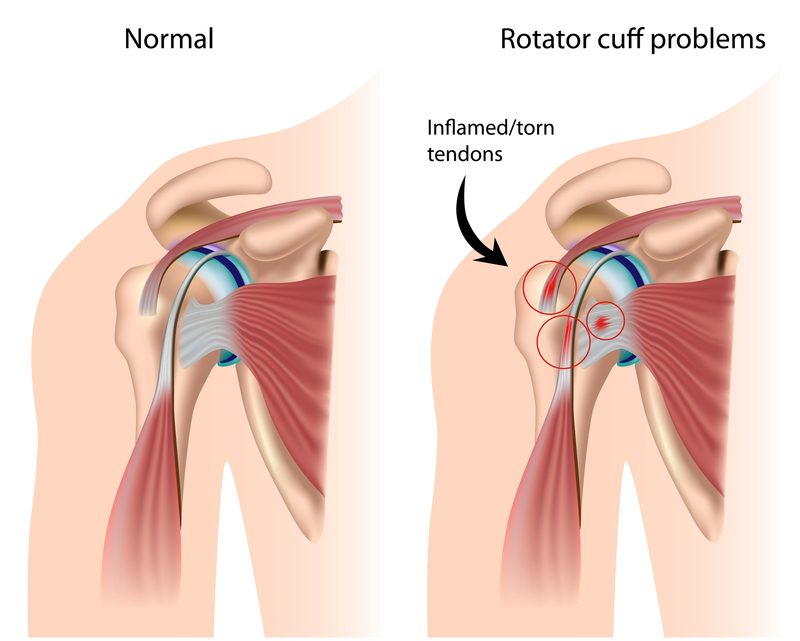The rotator cuff is a collection of four muscles that connect the arm bone to the shoulder blade. They work together to provide stability to the shoulder, especially in an overhead position.
However, highly repetitive tasks involving the shoulder (such as weightlifting, painting or swimming) may cause these muscles to become swollen and inflamed. If this is not treated early, the tendons of the cuff muscles can break down, resulting in pain and weakness. This condition is known as ‘rotator cuff tendinopathy’.
Risk factors associated with rotator cuff tendinopathy
- Increasing age (50+ years)
- Smoking
- Genetic predisposition
- High cholesterol
- Diabetes
- Obesity
- Highly repetitive tasks involving the shoulder
People who have rotator cuff tendinopathy often present with a history of an unaccustomed increase in shoulder activity prior to the onset of symptoms. This may include starting a new sport or a busy period at work.
Symptoms and Diagnosis
On testing, shoulder range of motion is often well preserved and resting pain is minimal. However, pain and weakness is often reproduced in positions which load the rotator cuff. This can include pushing out to the side, reaching up or lifting overhead.
Once a diagnosis is made, and other conditions have been excluded (such as large rotator cuff tears, frozen shoulder or arthritis), treatment can commence. Initial treatment involves techniques to manage the pain. Manual therapy such as massage and joint mobilisation can help in relieving symptoms.
Then, postural factors such as forward shoulder blades need to be addressed prior to the commencement of rehabilitation for better long term outcomes.
Rotator Cuff Tendinopathy Treatment
Research shows that a graded exercise program provides the best outcomes for patients with rotator cuff tendinopathy, when compared to surgery or passive treatment techniques (Littlewood et al., 2016). By progressively loading and strengthening the rotator cuff muscles, effective remodelling of the tissue can occur. This has not been shown during surgical interventions.
A tailored exercise program is then developed to help achieve the individuals’ goals. The following principles and parameters should be considered for each program.
Firstly, each program should be progressive in nature and include resistance type exercises, such as free weights, bands or body weight exercises. Gentle movements such as passive range of motion exercise has not been shown to be effective in the treatment of rotator cuff tendinopathy. For tissue remodelling to occur, the rotator cuff muscle needs to be gradually strengthened.
High repetitions have been shown to produce superior outcomes, with three sets being preferred to one or two. For clinically significant outcomes, exercises must be performed at least 3 times per week. A small amount of pain (3/10) is acceptable during the completion of exercises, however, this pain should not increase above resting levels or be higher following completion of the exercise program. Depending on the severity of the condition, and how soon you were able to seek treatment, full recovery can take six to 12 weeks.
Your physiotherapist will help find exercises that are best suited to your body and your goals to get you back to the things you love!
If you need help with pain or immobility to get you moving again, or need a tailored exercise program, book in for your treatment with one of our physios via 1300 012 273 or head to our website and book a session at your nearest clinic.

